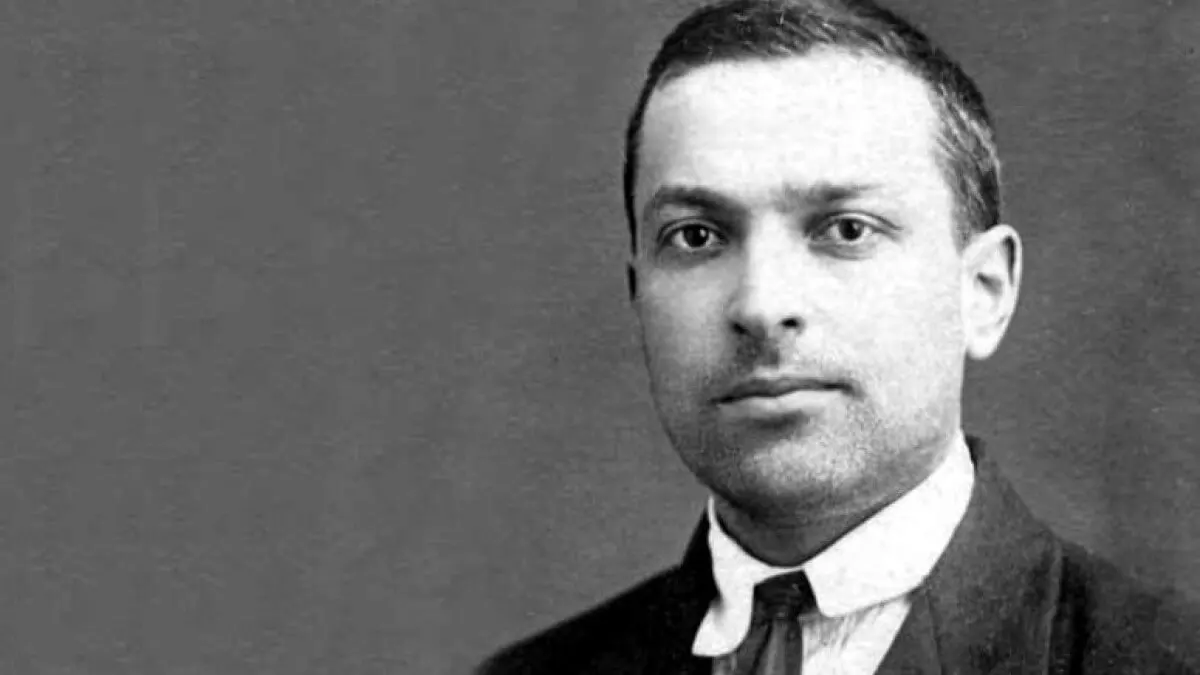What is Vygotsky's Sociocultural Theory of Cognitive Development?


Written and verified by the psychologist Maria Fatima Seppi Vinuales
What is learning? How do we learn? These questions have motivated many researchers from different disciplines, who have also offered different answers. In psychology, behaviorism proposed the relationship between stimulus and response, but there are also theories based on the postulates of constructivism; among them is the sociocultural theory of cognitive development.
Within the latter, we find the figure of Lev Vygotsky, one of the most influential thinkers on learning. The author sought to analyze the biological bases and how they are modified by the conditions of the context in the light of social interactions.
What does the sociocultural theory of cognitive development propose?
Vygotsky moves within what is called the sociocultural theory of cognitive development. In it, the author emphasizes the way in which social and cultural factors influence cognitive development. That is, he proposes that learning that occurs from successive interactions.
To understand this theory, it’s important to start with some central concepts or ideas:
- Vygotsky states that all human beings are born with basic functions, such as perception, memory, and attention. These functions are perfected and become higher mental functions through interaction with others.
- The development of these functions is always influenced by the values, practices, and beliefs of the culture to which one belongs.
- Scaffolding refers to the support provided by adult figures to the child so that he/she learns to do something by him/herself. It implies being at the same time a support and a helpful push until the child achieves it autonomously.
- Vygotsky’s proposal is within the framework of constructivism, as opposed to behaviorism. Even so, some theorists believe that part of the author’s postulates are not merely constructivist, but that there are nuances.
- Learning is not a strong stimulus-response association, but, on the contrary, it’s about construction, invention, and creativity. Hence, people also play an active role in the development of knowledge, as later analyses have revealed.
- His sociocultural theory of cognitive development, by including the sociogenetic component, allows him to overcome the traditional body-mind and nature-culture divisions. In this sense, it’s argued that it’s an integrative theory, in which, in addition to brain mechanisms or higher psychological functions, the analysis and influence of context is also included.
- The author also attaches great importance to the “tools of intellectual adaptation”, through which one learns and whose availability is related to the culture of belonging. Language is one of the main ones and represents a qualitative leap in higher functions. Moreover, it’s first social and then internalized.

We think you may be interested in reading this, too: What is Positive Psychology and What Is It Used For?
What is the zone of proximal development and what is its importance?
The zone of proximal development is the distance between the current situation and the child’s developmental potential.
That is, it’s a term to refer to the difference between what the child already knows how to do and what he or she doesn’t yet know, but could learn from a guiding figure. This is where Vygotsky considers that a child’s level of development can be observed: in what he or she has “pending”.
This zone is sensitive to learning, as Eun remarks, and it’s important that it be intervened in. Although the child can’t solve problems at this point on her own, when accompanied, she will learn something new or acquire a new skill that she will later exercise.
For example, the zone of proximal development indicates that a child already knows numbers, but cannot yet solve a sum of 2+2. With adult guidance, she learns to do so. So, in the future, she will have learned and will be able to do it on her own, without intervention.
It’s worth noting that Vygotsky believes that adults aren’t the only mediating figures when it comes to learning. It’s also possible to learn from peers.
Finally, it’s also interesting to recover Vygotsky’s reference to culture in teaching. What happens or is appropriate in one culture may not be appropriate in another. So it’s also necessary to understand that when it comes to cognitive development, there are multiple different and valid ways of reaching the same result.
How the sociocultural theory of cognitive development has been applied
Vygotsky’s sociocultural theory of cognitive development is very useful for thinking about the teaching and learning processes of children. In this sense, it’s learning to be and to do in company, not individually or alone, but within a larger context.
The role of adult figures should be one of accompaniment, guidance, and orientation- but not of imposition. Children need to be able to choose, to participate, to be allowed to be protagonists in their own learning and not mere receivers, much less blank slates.
Two of Vygotsky’s central ideas are that learning is collaborative and that scaffolding is support.
It’s also important to accompany learning with tools or methods that are personalized to each individual to facilitate the process and make it enjoyable. For example, while some children find it easier to learn through the use of images, others may prefer to represent situations or visualize in a more interactive way.
It’s also important to consider that the child’s knowledge, as well as his or her stage of development, is also crucial. Adults should help to make this zone of proximal development a challenge, not something impossible. It shouldn’t be so demanding as to cause frustration or incompetence, nor so easy as to demotivate.
In the school environment, teachers should think about content that makes sense to their students. Therefore, it’s not only important to know the culture and society to which one belongs, but also the microcultures of young people. Thus, Vygotsky allows us to revalue diversity, varying from the norm, and the notion of linearity.

Like this article? You may also like to read: The Similarities and Differences between Philosophy and Psychology
Vygotsky’s theory promotes collaborative development
The sociocultural theory of cognitive development provides us with useful tools to accompany the teaching and learning processes, since we’re a part of them. Education is a collaborative activity within the framework of society and culture.
Therefore, learning isn’t just individual development, but also implies the advancement of this culture and this society. What Vygotsky tells us is that the growth of some is also the growth of others, leaving aside an egoistic view of the fact of learning.
It’s crucial to recover the active role of both those who know and those who learn. The first steps should be guided and oriented, but what a child does today with help, tomorrow he/she will be able to do autonomously. Therefore, it’s a matter of facilitating environments that are constructive and include dialogue and exchange to allow for the healthy flow of knowledge.
All cited sources were thoroughly reviewed by our team to ensure their quality, reliability, currency, and validity. The bibliography of this article was considered reliable and of academic or scientific accuracy.
- Carrera, B., & Mazzarella, C. (2001). Vygotsky: enfoque sociocultural. Educere, 5(13), 41-44. https://www.redalyc.org/pdf/356/35601309.pdf
- Eun, B. (2019). The zone of proximal development as an overarching concept: A framework for synthesizing Vygotsky’s theories. Educational Philosophy and Theory, 51(1), 18-30. https://www.tandfonline.com/doi/abs/10.1080/00131857.2017.1421941
- García, J. G. (2020). El constructivismo en la educación y el aporte de la teoría sociocultural de Vygotsky para comprender la construcción del conocimiento en el ser humano. Dilemas Contemporáneos: Educación, Política y Valores. https://dilemascontemporaneoseducacionpoliticayvalores.com/index.php/dilemas/article/view/2033
- Rojas, G. H. (1999). La zona de desarrollo próximo. Comentarios en torno a su uso en los contextos escolares. Perfiles educativos, (86). https://www.redalyc.org/pdf/132/13208604.pdf
- Solovieva, Y., Rojas, L. Q., Ramos, A. M. B., & Córdova, E. A. E. (2022). La postura histórico-cultural de Vigotsky no es constructivista. CIENCIA ergo-sum, Revista Científica Multidisciplinaria de Prospectiva, 29(2). https://www.redalyc.org/journal/104/10470856008/
- Sulle, A., Bur, R., & Stasiejko, H. (2013). Las ideas de Vigotsky: Su recepción y apropiación en el contexto de las producciones académicas de la Psicología en la Argentina. Anuario de investigaciones, 20(2), 239-246. http://www.scielo.org.ar/scielo.php?script=sci_arttext&pid=S1851-16862013000200030
This text is provided for informational purposes only and does not replace consultation with a professional. If in doubt, consult your specialist.








